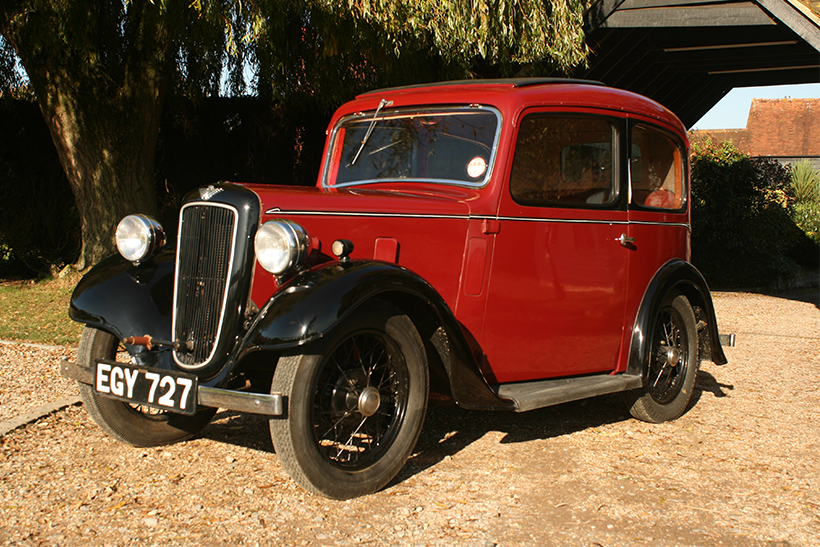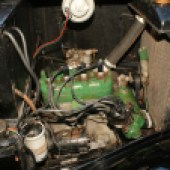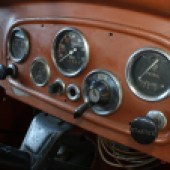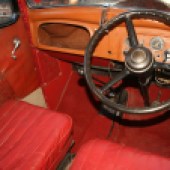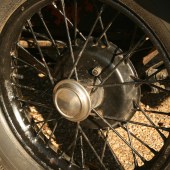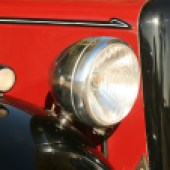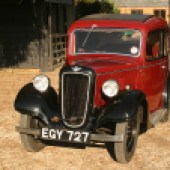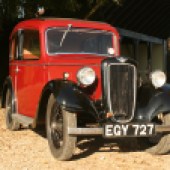Classics World’s Paul Bussey test drives and reviews the 1937 Austin Seven Ruby…
Herbert Austin established his company in Longbridge, Birmingham in 1905, which went on to achieve great notoriety in the motoring world. The humble Austin Seven enabled the average man in the street, to be able to purchase a small economical car and enjoy motoring on a minimalistic budget. Much of the car’s design work can be credited to Stanley Edge, who had worked in the drawing office at Austin, since he had left school at the age of 14.
Introduced in 1922 the Austin Seven was built using an A-shape chassis, which during the long production run of 17 years, came in three variations, to include short, long wheelbase low and long wheelbase high. Early cars were capable of a top speed of approximately 40mph and returned 40mpg, thanks to the thrifty 747cc engine in a lightweight chassis and bodywork, weighing in at less than 500kg. The Ruby model was introduced towards the end the Seven production and represented quite a refined car, compared with its previous earlier siblings.
Still powered by the venerable 747cc engine, the four-speed gearbox boasted syncromesh in 2nd, 3rd and fourth gears. The interior was well trimmed, the seats comfortable and ventilation was impressive, with a front opening windscreen, sliding sunroof and wind-down windows to the front and rear.
This Austin Seven Ruby is a fine example, having been in one family ownership from new and latterly 50 years by its last driver! The car was used sparingly in France, then stored for a while and has recently come to England and been recommissioned for the road again. Looking through the car’s documentation, it would appear that the Ruby underwent some restorative work in 1968, with a bill that breaks down to body repairs at £240, trim £96, paintwork £175 and mechanicals £140.

Then another £861 was spent with the Havant Motor Company, Hampshire, in 1978. The maroon paintwork has faired well, considering it was applied almost 50 years ago. It may not be of the finest quality and there is a little microblistering in places, but it’s still very shiny, stable and most presentable, as are the black painted wings. There’s also a simple and extremely easy to operate Pytchley Sliding sun roof. The underside of the car looks solid, clean and tidy, with just one or two areas just showing signs of minor surface rust, which is ripe for rubbing down and repainting.
The interior has retained the original red leather seat back covering, which are nicely mellowed, though the squabs have had new padding and been retrimmed in red leather. It’s not known whether the beige head lining is original, but it’s clean enough, as are the red carpets and door cards. One or two areas of minor trim need refixing, which will be an easy remedy.
Turn the ignition key, pull the starter button and the 747cc engine starts up swiftly enough. There seems to be a miniscule amount of travel in the clutch pedal, which bites quite quickly, so careful judious footwork, soon leads to smooth pulling away in first gear. It’s good to report that this later built Ruby has the improved four-speed ‘box with syncromesh in 2nd , 3rd and fourth gears, which alleviates the need for any double de-clutching and accompanying cacophonous clatter when you don’t get it just right! In fact the Ruby’s ‘box is a pleasure to use, with a longish throw. There’s a smidge of play in the steering wheel, par for the course in many old vintage cars, but hardly a hint of any worrying wander.
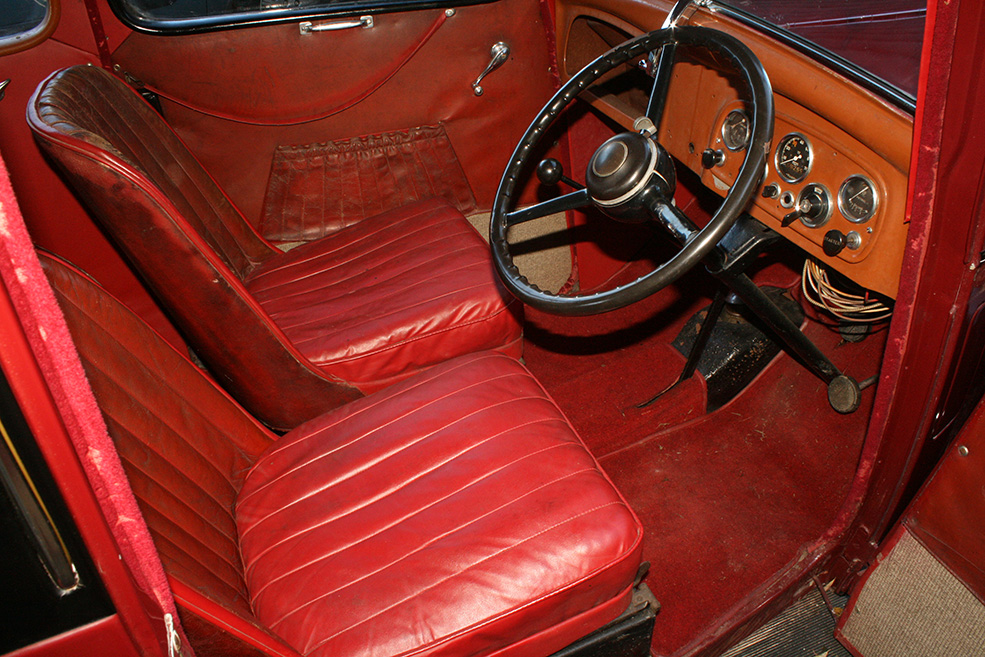
When Practical Motoring road tested a Ruby in March 1937, they noted the steering was light, we concur. They also went on to say that speeds of up to 58mph could be achieved, with the speedometer showing over 60mph going downhill. For today, we’ll stick to 40mph, which seemed a comfortable cruising speed. Accelerative progress is slow with a capital S! After a while, we reach the dizzy speed of 30mph and soon we’re almost at 40mph. Oil pressure is a healthy 20psi at speed and 10psi at idle. Better try the brakes too. There’s a slightly spongy feel to the pedal, but they are progressive and just about adequate. Advance warning of stopping will help to maintain a steady heart rate!
A fine example of Austin’s Ruby model, in very good order throughout, though further cosmetic detailing, especially in the engine bay, would lift it to another stage. Fitting flashing amber indicators would also be a prudent upgrade. This Ruby would be ideal for pottering around locally on Sunday mornings, attending the odd car show, but it’s not for venturing long distances, though you’d no doubt eventually reach your destination, but very slowly! If you’ve always fancied a punt at vintage car ownership and you’re on a low budget, this car would be ideal and as a starting point, you really can go far wrong?
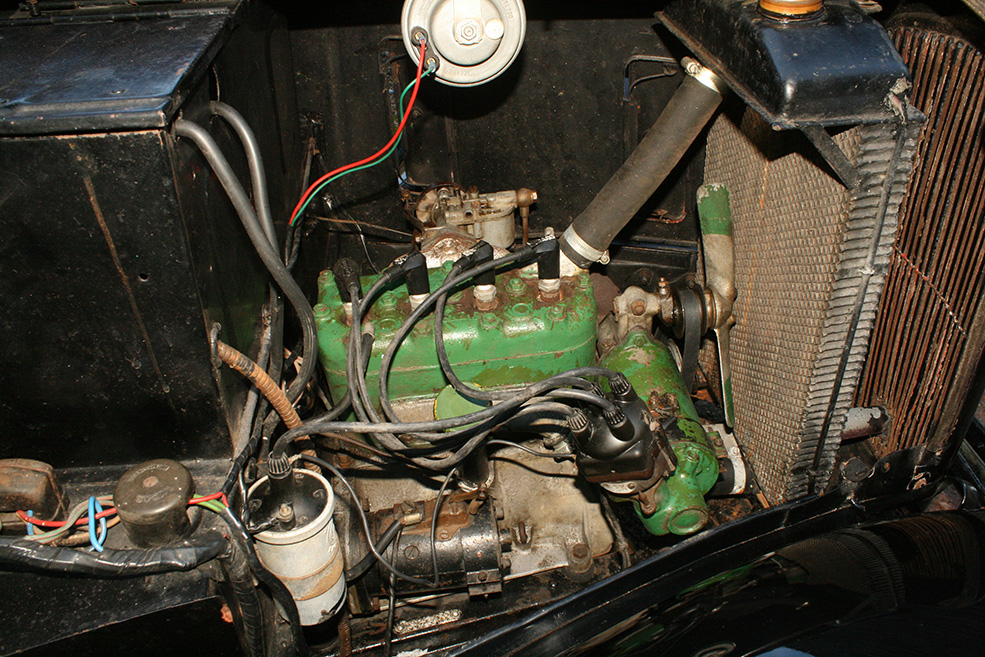
AUSTIN SEVEN RUBY TECH SPEC
Engine: 747cc
Power: 17bhp@3800rpm
Top Speed: 60mph
0-60mph: N/A
Economy: 40mpg
Gearbox: 4-speed manual

